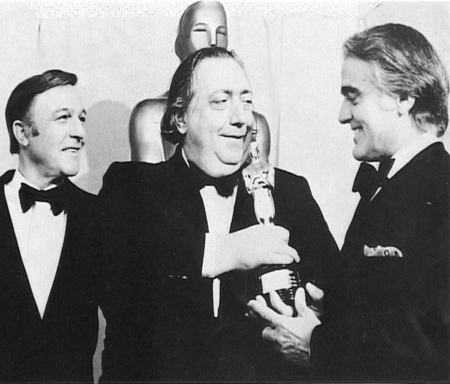
Reviews of Recent Independent, Foreign, & Documentary Films
in Theaters and DVD/Home Video

HENRI LANGLOIS: PHANTOM OF THE CINÉMATHÈQUE
Directed, Produced & Written by: Jacques Richard.
Director of Photography: Jerome Blumberg & Jacques Richard.
Edited by: Fabrice Radenac.
Music by: Nicolas Bay & Liam Farrell.
Released by: Leisure Time.
Language: French with English subtitles.
Country of Origin: France. 128 min. Not Rated.
In Bernardo Bertolucci's ode to youth The Dreamers, a Parisian pseudo-intellectual mockingly chains herself to the
closed gates of the Cinémathèque Français, protesting the ouster of its co-founder and director Henry
Langlois in iconoclastic 1968 Paris. For audiences sharing the puzzlement of Michael Pitt's character, this made-for-French-TV documentary clarifies
Langlois' role in world cinema and sheds light on what has become known as "The Langlois Affair."
Through loquacious talking-head interviews, friends and colleagues praise Langlois for turning film programming into an art
form and go as far as to call him the father of the French New Wave. Starting in the mid-1930s, Langlois began collecting
movies, mostly the suddenly obsolete silent films that were being trashed or left to decay. Over time his Club Circle of Cinema
evolved to a government-supported but chaotically-run institution. Believing every film to be a time capsule, he amassed 50,000
prints by 1944, in many cases by outsmarting the Nazi-occupied government. He admits in one archival interview that most of
the deteriorating nitrate prints the Cinémathèque rescued were stolen or illegally obtained. Among the many films
he's credited as saving are the now-revered The Cabinet of Dr. Caligari and The Blue Angel.
His programs, such as "100 Masterpieces of World Cinema," drew the likes of Francois Truffaut (one of Langlois's staunchest
defenders in '68), Jean-Luc Godard, Jacques Rivette, and Claude Chabrol. One reason why Langlois held such a powerful
following was his autocratic policy of screening a film only once every 10 years. And by comparing and contrasting the films in
his collection (the world's largest), the idea of each movie contributing to a director's body of work gained traction.
Since his death in 1977, the Cinémathèque has continued to thrive, but another of his
endeavors, the Cinema Museum, has been shut down since 1997. This remarkable collection of
artifacts suffered water damage from a nearby fire. Even before the disaster, it was not well
maintained (one of Marilyn Monroe's outfits was even stolen). Its fate is up in the air due to, as
the film implies, bureaucratic inaction, making this part of Langlois' legacy a point of
contention.
The film’s emphasis is much less on his beloved films and more on the scrappy Langlois himself. It's a shame that there are only
a few directors interviewed. Claude Chabrol, by far, provides the most candid and memorable revelations, especially regarding
Langlois' relationship with the "rather monstrous" Mary Meerson. She kept his efforts afloat, often by selling her own paintings.
There are a few snippets of Langlois appraising a filmed 1895 street scene in Seville - "It supersedes time and space" - and the work of
Jean Vigo. But these feel more like lectures than conversations, and are hardly eye-opening. That aside, the film successfully serves as a crash
course in the baroque world of French film politics, then and now. Kent Turner
October 12, 2005
HomeAbout
Film-Forward.com Archive of Previous
Reviews
|